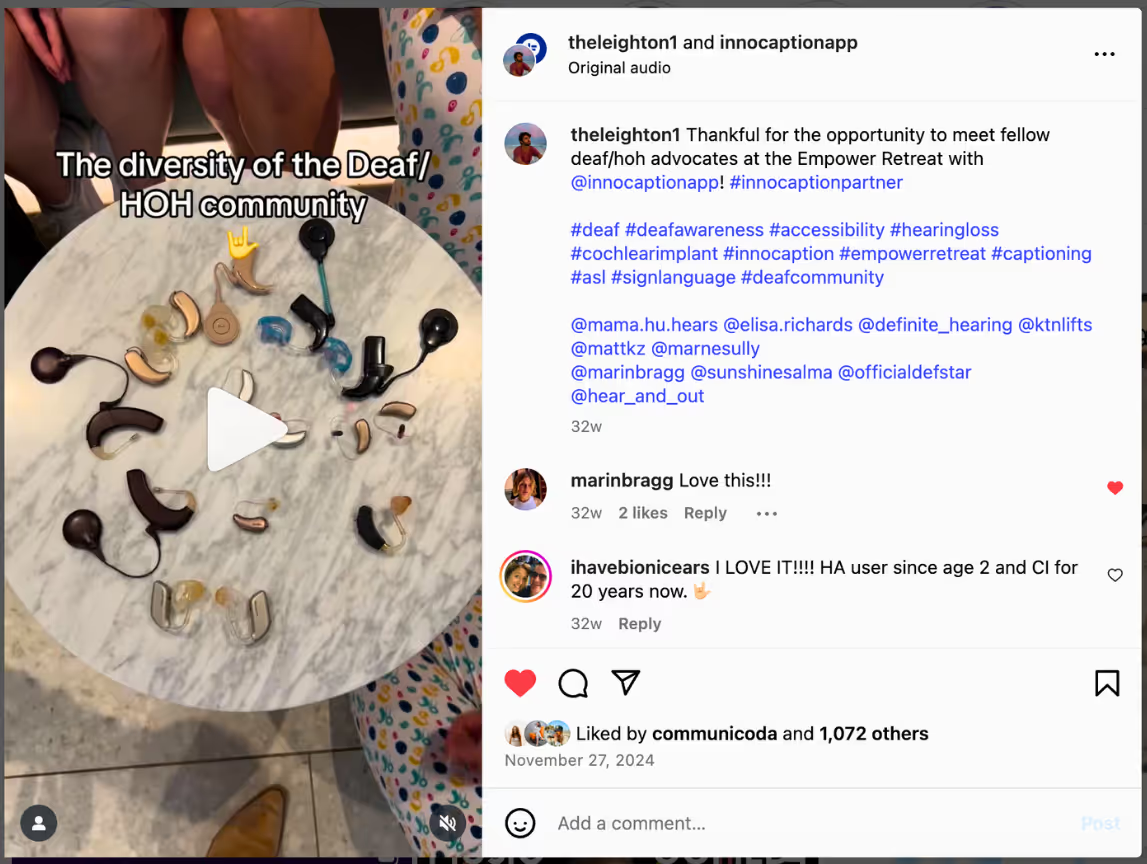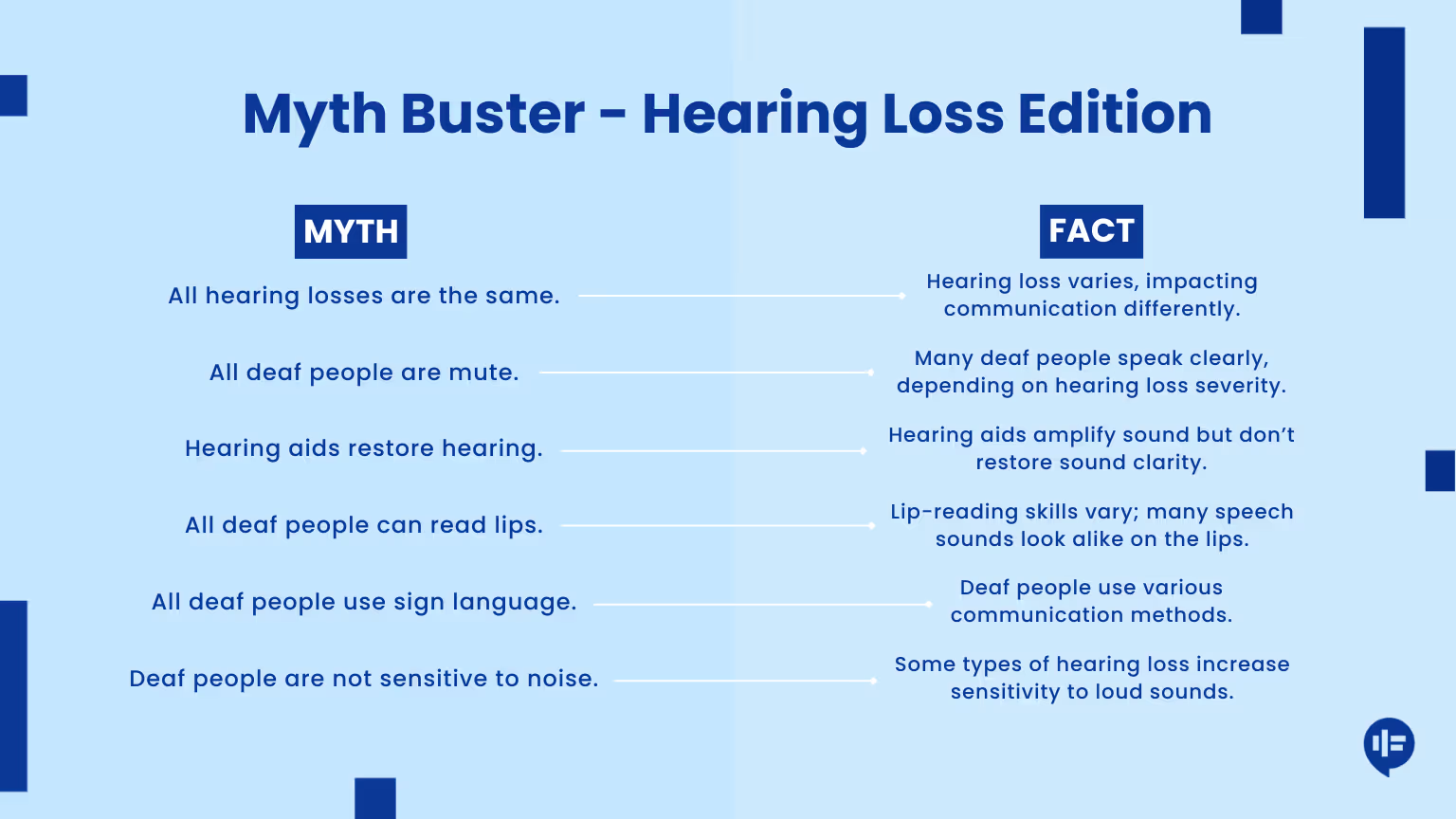Deafness is not a one-size-fits-all experience.
While some individuals have residual hearing and use hearing aids or cochlear implants to support spoken communication, others rely primarily on sign language or other non-verbal methods. Each deaf person has a unique approach to communication shaped by their background, hearing level, and personal preferences. Understanding these diverse experiences is essential for fostering respect and building a more inclusive society.
In this guide, we explore the spectrum of deafness, examine various communication methods, and dispel common misconceptions about deaf individuals and speech.
No two deaf individuals are exactly alike, and neither are their communication experiences. Recognizing and honoring this diversity is fundamental to supporting and respecting each person’s chosen mode of expression.

Deafness can vary significantly in severity and is typically classified by the degree of hearing loss, measured in decibels (dB):
It’s also important to consider when and how hearing loss occurs. Congenital hearing loss refers to hearing loss present at birth, progressive hearing loss develops gradually over time, and acquired or late-onset hearing loss emerges later in life. These experiences profoundly influence an individual’s communication methods. For example, someone who loses hearing after developing speech may continue to use spoken language, while someone born deaf might rely primarily on sign language.
Many deaf children can develop speech skills, particularly when hearing loss is identified early and appropriate intervention is provided. Speech therapy plays a pivotal role, helping children recognize sounds, articulate words clearly, and build foundational language abilities. Parental support is equally critical, whether through reinforcing spoken language or incorporating sign language at home.
Technological advancements further support speech development. Hearing aids amplify sounds, making them effective for individuals with mild to moderate hearing loss. Cochlear implants bypass damaged portions of the inner ear and directly stimulate the auditory nerve, providing access to sound for those with severe to profound hearing loss.
Because deafness exists on a spectrum, deaf individuals employ a variety of communication strategies, often combining multiple approaches tailored to their needs.
Some deaf individuals use spoken language as their primary means of communication. With early intervention, consistent speech therapy, and technological support, many develop strong verbal skills. Lip reading is frequently used alongside speech to aid understanding, though it can be challenging and is not universally effective.
Learning to speak can be particularly demanding for those born deaf or who lost hearing early in life, requiring significant dedication and support. Ultimately, what matters most is that each individual finds the communication method that best aligns with their needs and identity.
Sign language serves as a primary communication mode for many deaf individuals, especially those born Deaf. In the U.S., American Sign Language (ASL) is the most widely used. ASL is a fully developed, rich language with its own grammar and syntax, entirely distinct from English. It relies on hand shapes, facial expressions, and body movements to convey meaning.
Beyond ASL, many deaf individuals use gestures, facial expressions, and body language to enhance communication. Fingerspelling is often used for names or words without established signs, and some people combine sign language with lip reading or spoken language, depending on the context.
Advancements in technology have significantly broadened communication possibilities for deaf individuals:
These innovations foster more inclusive environments, allowing deaf individuals to engage and participate fully and comfortably.
Misconceptions about deaf individuals and their ability to speak remain widespread, often reinforcing unnecessary barriers. Let’s clarify some of the most common myths.

False assumptions can negatively impact deaf individuals’ mental health and social confidence. When people feel misunderstood or underestimated, it can lead to social isolation and diminished self-esteem, despite their full capability to communicate and contribute meaningfully.
Supporting deaf individuals begins with respecting their chosen communication methods and avoiding assumptions. If you're unsure how to best communicate, simply ask. Small acts of openness and respect help foster a more inclusive and understanding environment.
True inclusion means centering and amplifying deaf voices in every aspect of society.
When deaf leaders, creators, and athletes are visible in media, workplaces, and schools, they inspire others and challenge outdated stereotypes. Their presence underscores that communication takes many forms — whether through spoken language, sign language, written language, or assistive technology — and none diminish a person’s potential.
Organizations and institutions should actively support deaf individuals by providing essential resources such as interpreters, captioning services, and accessible communication tools. Just as important, they must listen to deaf people about their specific needs rather than making assumptions. Public figures like Nyle DiMarco and Emilee Segura exemplify what is possible when D/deaf individuals are empowered to lead and represent their communities authentically.
Every individual deserves the right to communicate in the way that serves them best.
Upholding these rights demands more than policy alone; it requires genuine community commitment and cultural change. Simple, intentional actions — such as adding captions to videos, using clear and inclusive language, and ensuring accessibility in public spaces — all help create a more equitable, welcoming world where every voice is heard and valued.
Deaf individuals express themselves in diverse ways: some speak, others sign, and many use a combination of methods, including assistive technologies. Each person’s approach is shaped by their experiences, hearing level, and personal choices.
In our earlier blog, Can Deaf People Hear Their Thoughts?, we explored the deeply personal and varied ways deaf individuals experience their inner worlds. Just as thinking isn’t limited to sound, communication isn’t limited to speech.
By learning about, listening to, and supporting these different communication methods, we move closer to a world where every voice — both internal and external — is valued, respected, and celebrated. When we create space for every expression, we build a society that truly honors the richness of human connection.
No. The ability to develop clear speech depends on several factors, including when hearing loss occurred, the degree of residual hearing, and access to early intervention. Those who lose hearing later in life often retain clear speech, while those born deaf may face more challenges.
Cochlear implants can significantly support speech development, particularly when implanted at a young age. They bypass damaged portions of the inner ear and directly stimulate the auditory nerve, providing a pathway to sound.
Sign language is a complete, natural language that empowers Deaf individuals to communicate and express themselves fully. It is especially essential for those who do not benefit from auditory technologies or who prefer visual communication.
Modern tools, including captioning services, hearing aids, cochlear implants, and speech-to-text applications, provide powerful support. These tools enable deaf individuals to participate confidently and meaningfully in a wide range of environments.
InnoCaption provides real-time captioning technology making phone calls easy and accessible for the deaf and hard of hearing community. Offered at no cost to individuals with hearing loss because we are certified by the FCC. InnoCaption is the only mobile app that offers real-time captioning of phone calls through live stenographers and automated speech recognition software. The choice is yours.
InnoCaption proporciona tecnología de subtitulado en tiempo real que hace que las llamadas telefónicas sean fáciles y accesibles para la comunidad de personas sordas y con problemas de audición. Se ofrece sin coste alguno para las personas con pérdida auditiva porque estamos certificados por la FCC. InnoCaption es la única aplicación móvil que ofrece subtitulación en tiempo real de llamadas telefónicas mediante taquígrafos en directo y software de reconocimiento automático del habla. Usted elige.